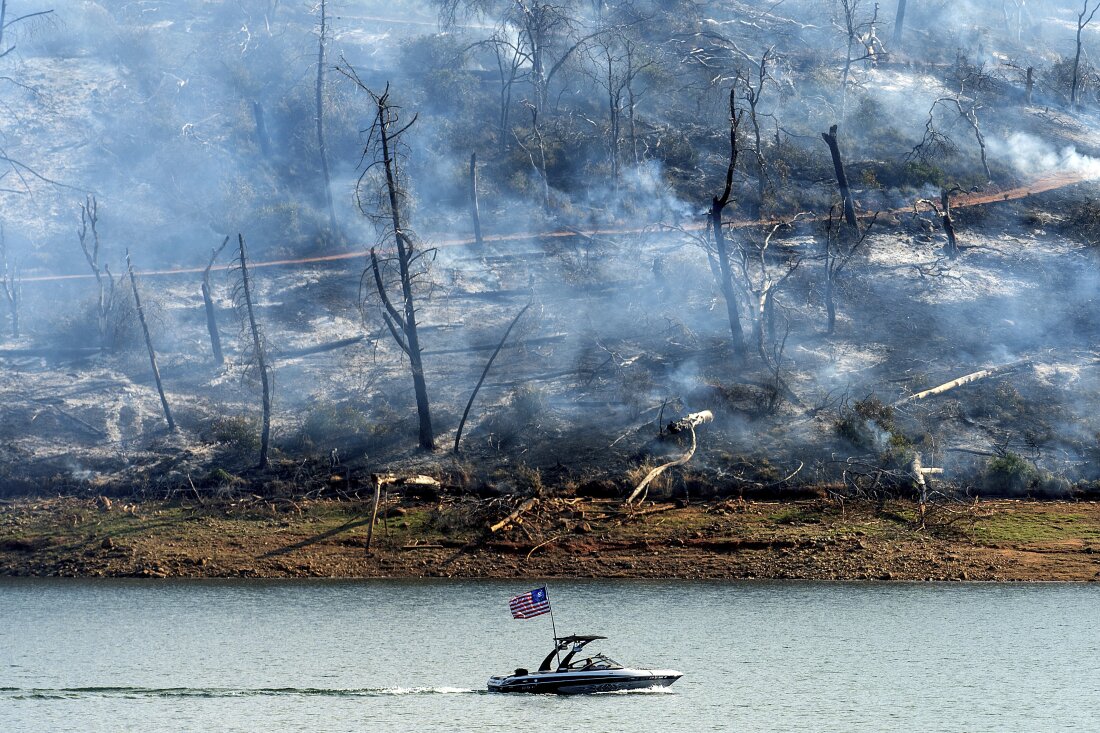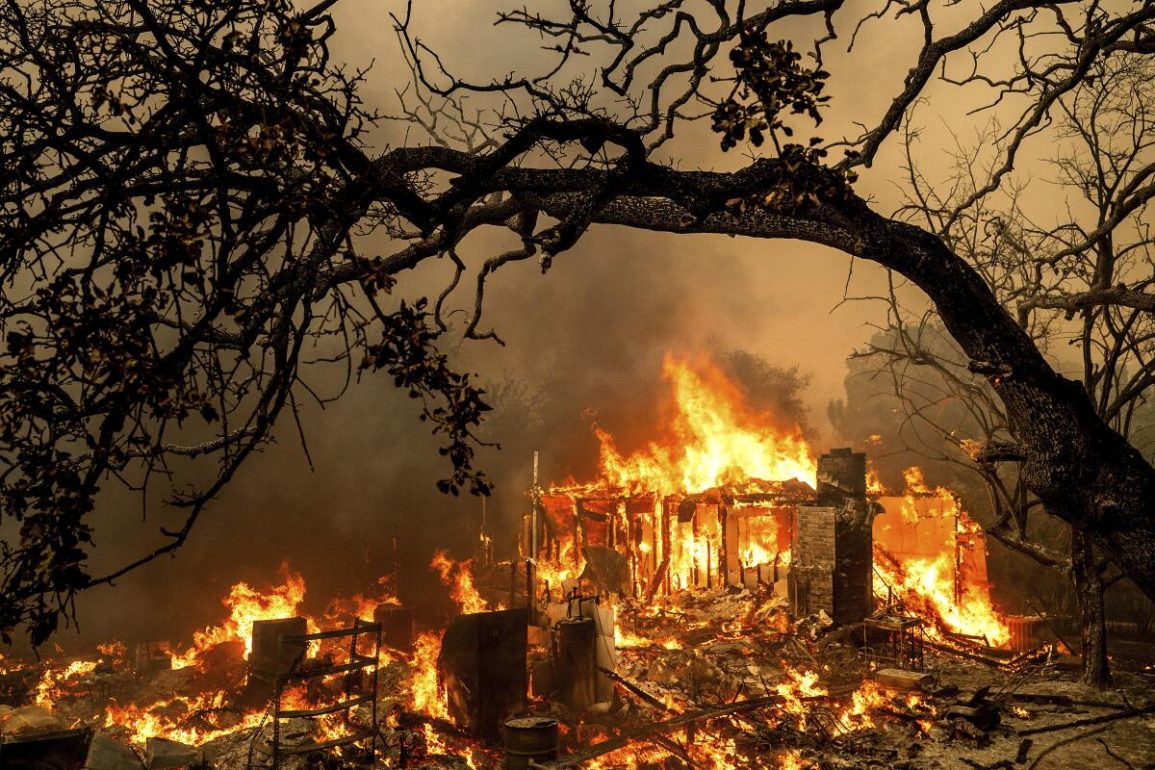Firefighters lined roads to prevent flames from reaching homes, while helicopters dropped water on a growing wildfire in Northern California, which has forced at least 26,000 people to evacuate amid extreme heat.
The Thompson Fire ignited before noon on Tuesday, approximately 110 kilometers north of Sacramento, near Oroville in Butte County. It sent up a massive plume of smoke visible from space as it expanded to over 14 square kilometers with no containment.
By Wednesday afternoon, Oroville Mayor David Pittman reported a “significant drop in the fire activity” and expressed hope that some residents might soon be allowed to return home.
Firefighters halted the fire’s progress along the southern edge and were working to build containment lines on the northern side, despite challenges posed by the steep terrain.
“On that north side they have some real struggles in terms of the topography,” Pittman said.
According to the California Department of Forestry and Fire Protection (Cal Fire), over a dozen other blazes, mostly small, were active across the state. A new fire on Wednesday afternoon triggered a small number of evacuations in Simi Valley, about 65 kilometers northwest of downtown Los Angeles.
The state’s largest blaze, the Basin Fire, covered nearly 57 square kilometers of the Sierra National Forest in eastern Fresno County and was 26% contained.
In Oroville, a state of emergency was declared Tuesday night, and evacuation centers were established. The evacuation zone expanded Wednesday into foothills and rural areas beyond the city, home to about 20,000 people.
Authorities also reminded the public that fireworks are banned in many areas, including most of Butte County, with July Fourth approaching.
There was no immediate official report on property losses, but an Associated Press photographer saw fire destroy three suburban-style homes in Oroville.
The fire ignited grass sprigs poking from the concrete edges of Lake Oroville, as gusty winds whipped up American flags lining a bend of the state’s second-largest reservoir and the nation’s tallest dam.

Residents stood on hillsides at night, watching the orange glow as aircraft dropped water to prevent the fire from spreading. A firefighting crew saved one home while goats and other farm animals ran to find safety.
The cause of the fire is under investigation. Red flag warnings for critical fire weather conditions, including gusty northerly winds and low humidity levels, were in effect when the fire started.
These warnings were expected to remain in effect until 8 p.m. Wednesday, according to Garrett Sjolund, the Butte County unit chief for Cal Fire.
“The conditions out there that are in our county this summer are much different than we’ve experienced the last two summers,” Sjolund said in an online briefing. “The fuels are very dense, brush is dry. And as you can see, any wind will move a fire out very quickly.”
These conditions prompted Pacific Gas & Electric to implement targeted public safety power shutoffs in parts of some Northern California counties to prevent fires from being ignited by downed or damaged wires.
More high temperatures above 100 degrees Fahrenheit (37.8 degrees Celsius) were forecast for Wednesday, with hot conditions expected to continue into next week, according to the National Weather Service.
Authorities warned of full legal consequences for any illegal use of fireworks during the Fourth of July holiday.
“Don’t be an idiot, cause a fire and create more problems for us,” said Butte County Sheriff Kory L. Honea. “No one in the community is going to want that. And we certainly don’t want this.”
Late Tuesday, the governor’s office announced that federal funding had been approved to assist with firefighting efforts. Governor Gavin Newsom activated the State Operations Center this week to coordinate California’s response, dispatch mutual aid, and support communities facing wildfire threats and excessive heat.
In Southern California, Joshua Tree National Park officials closed Covington Flats, an area with many of the park’s important Joshua tree populations, on Wednesday due to extreme fire risk.
Spring rains had led to abundant grass, now dried. A June 2023 fire had burned 4.14 square kilometers of Joshua trees and desert tortoise habitat.

